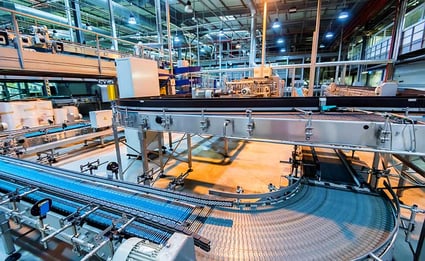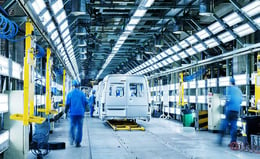Five Ways Legacy Systems Could Be Hindering Your Supply Chain
Nancy Sarpolis - November 23, 2021

The breakneck pace of technology often means that supply chains are relying on a patchwork of legacy systems that struggle to meet real-world demand fluctuations. From clipboards with inventory data to planned maintenance tracked by spreadsheet to aging proprietary data collection systems that are costly and time-consuming to upgrade, legacy systems can be a drain on an organization’s efficiency and productivity.
Here are five ways legacy systems could be making your supply chain less efficient:
Manual processes
A survey of nearly 400 supply chain executives by Reuters suggests that the COVID-19 pandemic disruptions signal an urgent need for companies to move beyond legacy systems and embrace digitalization: Fifty-five percent of executives report they still use manual processes to make planning decisions, while 28 percent saying that their entire decision-making process is manual and lacks any system support. When it comes to meeting increased demand, the crucial and often missing piece of the puzzle is the ability to quickly access the necessary data—and manual processes aren’t up to the task.
Inconsistent digitalization
The production facility may be fully enabled with sensors sending real-time data for instant analysis, but if the warehouse still relies on spreadsheets and manual data entry, the disconnect could be costly in terms of efficiency and productivity. Today’s logistics challenges depend on making processes and data available in a digital environment—and integration becomes more difficult the longer companies wait. Organizations should aim for operational visibility that offers a complete view of every machine, person, process, and other resource.
Siloed data and systems
Breaking down data silos is one of the key strategies for preparing your company for supply chain volatility. No matter how integrated your systems are, one manual process or incompatible software system can mean the difference between a good plan and a disaster. Eliminate data silos by ensuring all IT systems across the organization are integrated. Then, make sure those systems can communicate and transmit data in formats that other systems can read. It may not be an easy process, but the results can help pave the way for more impressive things like advanced analytics and other automated workflows.
Outdated technology
Everyone has a horror story about a system upgrade, and for good reason. Downtime, customized proprietary software, incompatibility with other systems and obsolescence make technology updates a challenge. Consider whether any legacy apps could be migrated to the cloud or replaced with a cloud-based solution. Cloud-based solutions not only help reduce operating costs by streamlining automated processes and information and data storage, but also help breakdown functional silos and barriers to communication and collaboration. Plus, cloud-based solutions make it possible to roll out new features to plants 200 times more quickly than previously and to roll out entire new applications 50 times faster.
Data doesn’t allow you to be proactive
Legacy systems that can’t power real-time information flows, and aren’t equipped with advanced analytics systems can’t facilitate quick decision-making. Systems that put production, inventory and transportation planners in a position where they have relevant information at their fingertips allows companies to be proactive rather than reactive in their business processes.
The rapid pace of technological change is here to stay and the demands on today’s supply chain will continue to grow. Organizations that want to keep up—and get ahead of the curve—should consider digitalization of existing legacy systems for greater end-to-end supply chain visibility and actionable, real-time data for quick decision-making and implementation.
If you want to learn more get your Guide to Industry 4.0
In this Guide you will learn:
- Key facts about Industry 4.0
- Benefits of implementing the Industry 4.0 framework
- How your company can move to the future of the supply chain industry
LATEST POSTS
- Understand Circular Economy in The Manufacturing Industry
- How Can Industry 4.0 IT Integration Be Achieved Smoothly?
- The Significance of Order Sequencing in Discrete Manufacturing
- How to improve your Supply Chain Management: The Power of Control Towers
- Optimizing Human Resource Scheduling in Manufacturing: A Technological Approach



